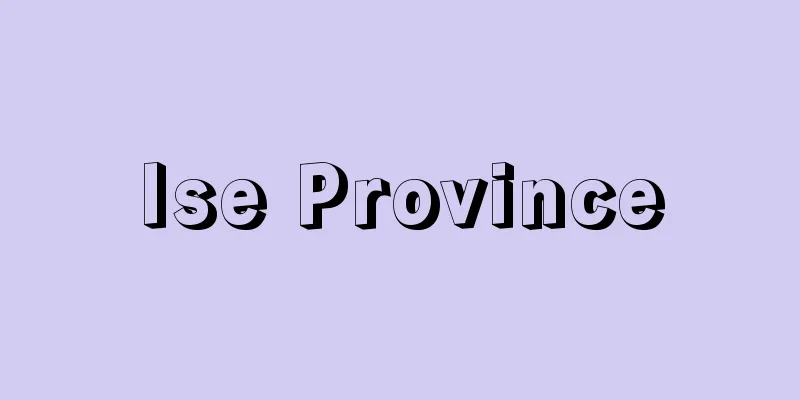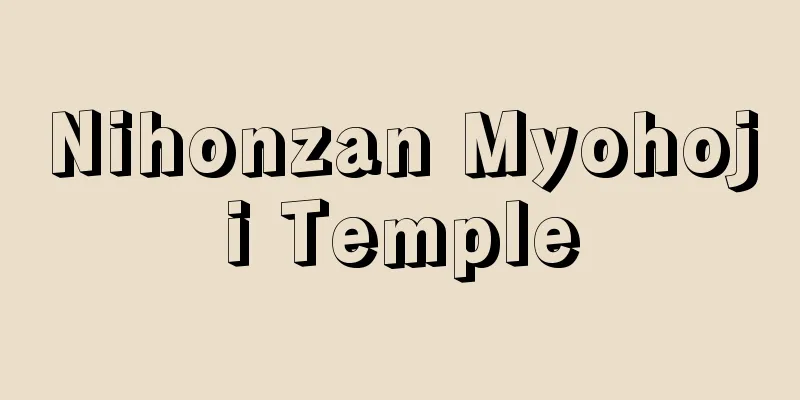The Satsuma Rebellion

|
In 1877 (Meiji 10), Kyushu samurai, centered around the Kagoshima Private School faction, supported Saigo Takamori and started an anti-government civil war. [Toshihiko Mori] backgroundThe background to the Satsuma Rebellion was a strong anti-government sentiment among the samurai. After the abolition of the feudal domains and the establishment of prefectures, the government, in its rush to modernize, forced through policies to dismantle the feudal system, such as the abolition of stipends, conscription, and the prohibition of swords. This caused a drastic change in the status and lifestyle of the samurai, who were stripped of their feudal privileges and fell into poverty in large numbers. Moreover, government officials, who were proud of their achievements in the restoration, took on autocratic tendencies, and corruption also became apparent, which intensified the samurai's anti-government sentiment. In 1873, the government split over the dispatch of the Korean mission (the so-called Meiji 6th Political Crisis), and Saigo Takamori, Itagaki Taisuke, and others resigned from office. Following this, many members of the Imperial Guard from Kagoshima and Kochi resigned, returned to their hometowns, and became the core of anti-government samurai groups. In Kagoshima Prefecture, Kirino Toshiaki, Shinohara Kunimoto, Murata Shinpachi, and others organized private schools and worked on education and mutual aid for samurai. Prefectural governor Oyama Tsunayoshi (a former samurai of the Satsuma domain) allied himself with the private school samurai, appointed them to key positions in the prefecture, and pursued his own economic and social policies in opposition to the government's centralized policies. As a result, Kagoshima Prefecture appeared as an independent country hostile to the government. In addition, against the backdrop of anti-government sentiment among the samurai, the Freedom and People's Rights Movement calling for the establishment of a constitution and the opening of a national parliament had been gaining momentum since 1874, with Itagaki and other Tosa Risshisha samurai at its core. In response, the government's Okubo Toshimichi and Ito Hirobumi attempted to have Itagaki and others enter the cabinet at the Osaka Conference in 1875 in order to isolate the Saigo faction. In 1876, the anti-government situation became even more serious. Farmers who were dissatisfied with the land tax reform started major uprisings in Ibaraki, Mie, Aichi, Gifu, Sakai (present-day Osaka Prefecture and Nara Prefecture), and other prefectures, shocking the government. Meanwhile, samurai in various places, such as Kumamoto (Shinpuren), Akizuki in Fukuoka Prefecture, and Hagi in Yamaguchi Prefecture (Maebara Issei), started rebellions one after another, and they were hoping that Saigo would rise up. Whether he liked it or not, Saigo came to be seen as a symbol of the samurai's anti-government movement. Faced with this difficult situation, the government considered the Kagoshima samurai to be a base for anti-government activities and attempted internal sabotage, such as sending in spies, in an attempt to wipe them out. [Toshihiko Mori] BeginningSaigo retired to Kagoshima, where he lived a comfortable life and refrained from participating in samurai rebellions in various places. However, as tensions between the government and the Kagoshima samurai intensified, he was pushed to the forefront of the anti-government movement of the Kagoshima samurai, against his will. In January 1877, the government, wary of gunpowder from the Kagoshima Somuta Army Explosives Storehouse falling into the hands of the private school faction, tried to secretly remove it without contacting the prefectural office. This strongly angered the private school faction, and after the night of the 30th of that month, some of them attacked the Army Explosives Storehouse and the Iso Navy Shipyard gunpowder storehouse to steal ammunition. This, combined with the government's provocative dispatch of spies, caused the anger of the private school faction to explode, and Saigo was no longer able to contain the momentum. On February 15th, 13,000 Kagoshima samurai marched armed to Tokyo in support of Saigo, on the grounds that they were questioning a government spy, Junior Inspector Nakahara Takao, and others who had returned home and plotted to assassinate Saigo. Anti-government samurai from all over Kyushu also rose up in response. Those who joined the war from outside Kagoshima were called the Tosatsu Troops. Among them was a group led by civil rights activists Hirakawa Yuichi, Miyazaki Hachiro (Kumamoto), and Masuda Sotaro (Nakatsu). It can be said that the Satsuma Rebellion took on the aspect of a military freedom and civil rights movement. [Toshihiko Mori] Battle SituationOn February 22nd, Saigo's forces attacked the Kumamoto Garrison in Kumamoto Castle, but the garrison under Commander-in-Chief Tani Kanjo fought hard to defend, so Saigo's forces switched to a siege strategy. On February 19th, the government appointed Prince Arisugawa no Miya Taruhito as the commander-in-chief of the expedition, and Army Lieutenant General Yamagata Aritomo and Navy Lieutenant General Kawamura Sumiyoshi as counselors, and dispatched a punitive force. At first, government leaders were skeptical of Saigo's participation in the rebel army, but when it became clear that he was serving in the army, they revoked Saigo's official rank on February 25th. The government forces, superior in equipment and manpower, succeeded in lifting the siege of Kumamoto Castle after a fierce battle on April 15th, and then went on the offensive. Saigo's forces, which were on the defensive, moved to the Hyuga region to try to make a comeback, but lost Hitoyoshi on June 1st, Miyakonojo on July 24th, Miyazaki and Sadohara on July 31st, and were driven into the village of Nagai and disbanded. Some of them escaped the siege of the government forces, taking Saigo with them, and returned to Kagoshima, where they barricaded themselves in Shiroyama. On September 24, Shiroyama also fell, and Saigo, Kirino, Murata, Ikegami Shiro, Henmi Jurota, Beppu Shinsuke and others were killed side by side, bringing an end to the fighting that had lasted for six months. Saigo's forces had a total of over 30,000 troops, of which 13,000 were from the Private School faction, 10,000 were mid-career conscripts, and the remaining 10,000 were from the Satsuma-Kai faction. Around 6,000 were killed in battle, and over 2,760 were punished after the war, including 22 executions. The government forces had a total of 58,600 troops, 19 ships, and over 6,800 killed in battle. [Toshihiko Mori] resultThe Seinan War was the largest and last samurai rebellion. The government survived this rebellion and established a base of power. On the other hand, the Freedom and People's Rights Movement turned away from armed struggle and instead turned to influencing the masses through organization and speech. It should also not be overlooked that the huge expenditure on the Seinan War caused inflation and promoted the primitive accumulation of Japanese capitalism. [Toshihiko Mori] "Kagoshima Prefecture History Volume 3" (1941, Kagoshima Prefecture) ▽ "Kokuryu-kai ed. "Seinankiden Volumes 1 and 2" (1909, Kokuryu-kai Headquarters/Reprint Edition, 1969, Hara Shobo)" [References] | | | |Source: Shogakukan Encyclopedia Nipponica About Encyclopedia Nipponica Information | Legend |
|
1877年(明治10)鹿児島私学校派を中核とする九州の士族が、西郷隆盛(さいごうたかもり)を擁して起こした反政府内戦。 [毛利敏彦] 背景西南戦争の背景には士族の強烈な反政府風潮があった。廃藩置県後、近代化を急ぐ政府は、秩禄(ちつろく)処分、徴兵制、廃刀令など領主制解体の政策を強行したので、士族の地位と生活が激変し、彼らは封建的特権を奪われて大量に没落した。しかも、維新の功績に慢心した政府高官は、専制的傾向を帯び、腐敗状況も現れたので、士族の反政府気分は高まった。 1873年の朝鮮使節派遣をめぐる政府分裂(いわゆる明治六年の政変)で西郷隆盛、板垣退助(いたがきたいすけ)らが下野すると、これに続いて鹿児島や高知出身の近衛兵(このえへい)多数が辞職、帰郷し、反政府士族グループの核となった。鹿児島県では、桐野利秋(きりのとしあき)、篠原国幹(しのはらくにもと)、村田新八(むらたしんぱち)らが私学校を組織し、士族の教育、共済にあたった。県令大山綱良(つなよし)(旧薩摩(さつま)藩士)は、私学校派士族と結び、彼らを県政の要職に任命し、政府の集権政策に抗して独自の経済・社会政策を進めたので、鹿児島県は政府に敵対的な独立国の観を呈した。また、士族の反政府風潮を背景に、74年以来、憲法制定、国会開設を求める自由民権運動が高まり、板垣ら土佐立志社(りっししゃ)士族がその中心となった。これに対し、政府の大久保利通(おおくぼとしみち)や伊藤博文(ひろぶみ)は、75年の大阪会議で板垣らの入閣を図り西郷派を孤立させようとした。 1876年に入ると、反政府状況はいっそう深刻になった。地租改正に不満を抱く農民は、茨城、三重、愛知、岐阜、堺(さかい)(現在の大阪府の一部および奈良県)などの各県で大一揆(いっき)を起こし、政府に衝撃を与えた。他面、熊本(神風連(しんぷうれん))、福岡県秋月(あきづき)、山口県萩(はぎ)(前原一誠(まえばらいっせい))など各地の士族は相次いで反乱を起こしたが、彼らは西郷の決起を期待していた。西郷は、好むと好まざるとにかかわらず、士族の反政府運動のシンボル視されるに至った。このような難局に直面して、政府は鹿児島士族を反政府の拠点とみなし、その掃滅を図って、密偵派遣など内部破壊工作を試みた。 [毛利敏彦] 発端鹿児島に退隠した西郷は、自適の生活に終始し、各地の士族反乱にも呼応せず自重していた。しかし、政府と鹿児島士族間の緊張が激化すると、彼は、その本意に反して鹿児島士族の反政府運動の先頭に推し挙げられた。1877年1月、政府は、鹿児島草牟田(そうむた)陸軍火薬局の火薬が私学校派の手に渡るのを警戒し、県庁にも連絡せずにひそかに搬出を試みた。このことは私学校派を強く刺激し、同月30日夜以後、彼らの一部が、陸軍火薬局ならびに磯(いそ)海軍造船所付属火薬庫を襲って弾薬を奪った。ここに、政府の挑発的な密偵派遣と相まって、私学校派の怒りは爆発、いまや西郷もこの勢いを抑えることはできなかった。2月15日、1万3000の鹿児島士族は、政府密偵の中原尚雄(たかお)少警部らが帰郷して西郷暗殺を企てた件の尋問を理由に、西郷を擁して武装上京に立ち上がった。九州各地の反政府士族も呼応決起した。彼ら鹿児島以外から参戦したものを党薩(とうさつ)諸隊という。そのなかには、民権派の平川唯一、宮崎八郎(熊本)や増田宋太郎(そうたろう)(中津)らのグループもいた。西南戦争は武力による自由民権運動の側面を帯びていたといってもよい。 [毛利敏彦] 戦況西郷軍は、2月22日、熊本城にある熊本鎮台を強襲したが、司令長官谷干城(たにかんじょう)以下の守兵は懸命に防御したので、西郷軍は包囲作戦に転じた。政府は2月19日、有栖川宮熾仁(ありすがわのみやたるひと)親王を征討総督に、陸軍中将山県有朋(やまがたありとも)、海軍中将川村純義(すみよし)を参軍に任命し、征討軍団を派遣した。当初政府首脳は、反乱軍に西郷が参加しているかどうか疑っていたが、西郷の従軍が明らかになったので、2月25日、西郷の官位を取り消した。 装備と人員に勝る政府軍は、4月15日、激戦のすえ熊本城の包囲を解くのに成功し、以後攻勢に移った。守勢に回った西郷軍は、日向(ひゅうが)地方に転じて再起を図ったが、6月1日人吉(ひとよし)、7月24日都城(みやこのじょう)、同31日宮崎、佐土原(さどはら)を失い、長井村に追い詰められて解散し、一部が西郷を擁して政府軍の包囲を脱出、鹿児島に帰って城山(しろやま)に籠(こも)った。9月24日城山も陥落、西郷以下、桐野、村田、池上四郎(いけがみしろう)、辺見十郎太(へんみじゅうろうた)、別府晋介(べっぷしんすけ)らが枕(まくら)を並べて討ち死にし、半年に及ぶ戦闘は終結した。西郷軍の総兵力は3万余、うち1万3000は私学校派、1万は中途よりの徴募兵、残り1万は党薩諸隊であり、戦死6000前後、戦後斬罪(ざんざい)22を含んで2760余が処罰された。政府軍の総兵力は5万8600、艦船19隻、戦死6800余であった。 [毛利敏彦] 結果西南戦争は、最大かつ最後の士族反乱であった。政府はこの反乱を乗り切って権力的基礎を確立した。他面、自由民権運動は武力闘争にかえて、組織と言論を通じて民衆に働きかける方向に転じた。また、巨額の西南戦費支出はインフレーションを引き起こし、日本資本主義の原始的蓄積を推し進めた側面も見落としてはならない。 [毛利敏彦] 『『鹿児島県史 第3巻』(1941・鹿児島県)』▽『黒龍会編『西南記伝 中の1・2』(1909・黒龍会本部/復刻版・1969・原書房)』 [参照項目] | | | |出典 小学館 日本大百科全書(ニッポニカ)日本大百科全書(ニッポニカ)について 情報 | 凡例 |
>>: Southwestern Yi (English spelling)
Recommend
kala'au (English spelling) kalaau
...The basic instruments that accompany the hula ...
ephedrine
α-[1-(methylamino)ethyl]benzenemethanol. C 10 H 1...
Osona, R.de (English spelling) OsonaRde
...The representatives of this period are painter...
Abrahamic Covenant - Abrahamic Covenant
...On the other hand, according to the Old Testam...
Antocrawl - Antocrawl
…(2) Flavonoids: Yellow pigments with a C 6 -C 3 ...
Anode ray
A flow of positive ions that flows from the anode...
Kanebo Dispute
This labor dispute occurred at eight factories of ...
Amagi Pass
A pass located in the center of the Izu Peninsula...
Sankyoku - Sankyoku
A new type of song literature in the form of long...
Varanus salvadorii (English spelling)
… [Takahiro Matsui]. … From Komodo Dragon …Monito...
hypothetical cohort
...When calculating how many children a group of ...
Oyashirazu - Wisdom tooth
[1] [noun] ① A person who is adopted by someone im...
The Three Great Masterpieces of Kabuki
... Ningyo joruri. Historical piece. Five acts. A...
Pulse position modulation
…When the carrier wave is a pulse train, phase mo...
Lychnis sieboldii (English name) Lychnissieboldii
…[Eiji Miki] [Munemin Yanagi]. … *Some of the ter...









